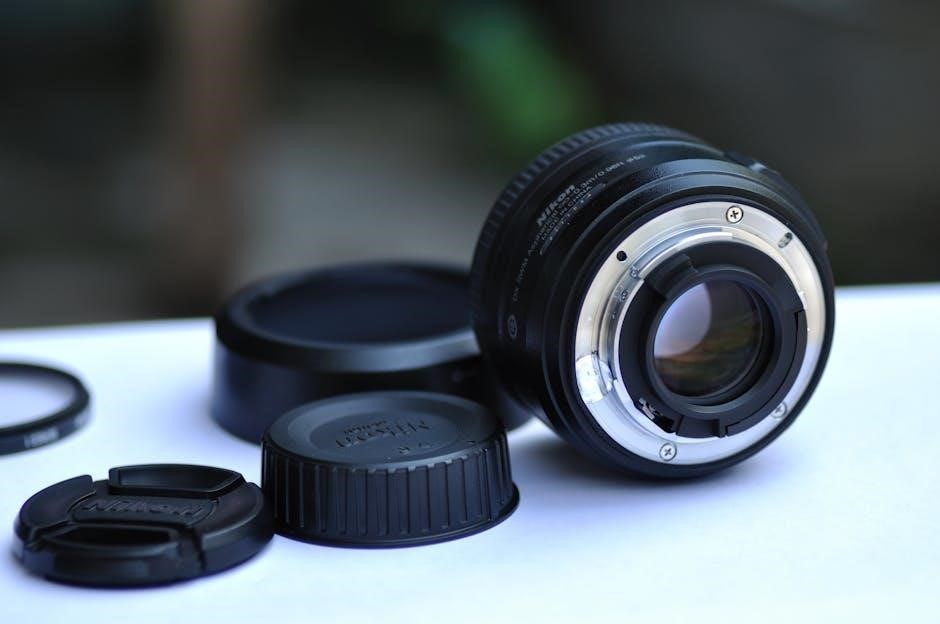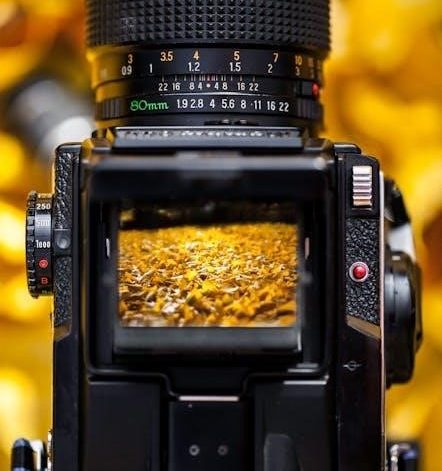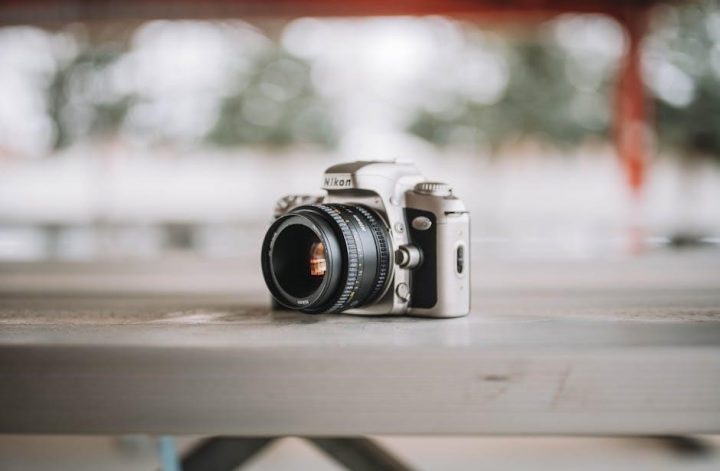The Cine Lens Manual is a comprehensive guide to cinema optics, blending art and science. Written by experts Jay Holben and Christopher Probst, it offers clear, illustrated insights for all filmmakers.
Overview of the Comprehensive Guide
The Cine Lens Manual is a detailed exploration of cinema optics, offering insights into the art, science, and history of cinematographic lenses. Designed for filmmakers of all levels, it covers fundamental concepts, optical principles, and practical applications. With extensive illustrations and clear language, it serves as both an educational resource and a practical reference. The manual bridges technical and creative aspects, making it indispensable for understanding lens design, functionality, and their impact on visual storytelling in modern and historical contexts.
Authors and Their Expertise
Authors Jay Holben and Christopher Probst bring over 60 years of combined experience in cinematography, education, and technical journalism. Holben, a renowned director and producer, and Probst, an ASC member, offer deep insights into cinema optics. Their expertise spans lens design, optical principles, and practical applications, making them trusted authorities in the field. This collaboration ensures the manual is both comprehensive and accessible, catering to professionals and enthusiasts alike.
Key Features of the Manual
The Cine Lens Manual is a detailed resource covering optics, design, and history. It features clear language, extensive illustrations, and practical applications. The manual includes chapters on lens basics, optical concepts, and customization, making it a versatile guide for filmmakers. Its accessible style ensures complex topics are understandable, catering to all skill levels. This comprehensive guide is essential for cinematographers, directors, and anyone seeking a deeper understanding of cinema optics.

Understanding the Basics of Cine Lenses
The Cine Lens Manual introduces fundamental concepts of cinema optics, explaining how lenses function and their role in capturing images. It explores optical principles and their filmmaking applications.
Defining the Lens: Fundamental Concepts
A cine lens is a precision optical instrument designed to capture images for filmmaking. It consists of glass or plastic elements arranged to focus light onto a camera sensor or film. Key concepts include focal length, which determines the angle of view, and aperture, controlling light entry and depth of field. Lenses also feature mechanical components like focus and zoom controls. Understanding these basics is essential for harnessing the lens’s creative potential in storytelling and visual expression, as detailed in The Cine Lens Manual.
Optical Principles and Their Role in Filmmaking
Optical principles form the backbone of cine lens functionality. Refraction and diffraction dictate how light behaves through the lens, influencing image sharpness and clarity. Chromatic aberration control ensures accurate color reproduction, while depth of field management shapes the visual narrative. These principles are crucial for achieving desired aesthetic effects, such as bokeh or selective focus, enabling filmmakers to craft compelling visual stories. The Cine Lens Manual elaborates on these principles, providing a foundation for both technical and creative decision-making in cinematography.
Design and Construction of Cine Lenses
Cine lenses are crafted with precision, blending optical and mechanical excellence. Advanced engineering ensures optimal performance, while customization options empower filmmakers to tailor visuals to their artistic vision.
Optical Designs in Action
Optical designs in cine lenses are a perfect balance of art and science, ensuring exceptional image quality. From anamorphic to spherical designs, each type offers unique visual characteristics. Advanced coatings minimize flares and distortions, while aspherical elements enhance sharpness. Modern designs cater to Ultra HD 8K standards, delivering pristine clarity. Customizable options allow filmmakers to achieve distinct looks, making optical design a critical tool in storytelling. The evolution of optical technology continues to push creative boundaries, providing cinematographers with precise control over their visual narratives.
Mechanical Aspects of Lens Construction
The mechanical construction of cine lenses is meticulously engineered for precision and durability. High-quality materials ensure robustness, while focus and zoom mechanisms provide smooth, accurate control. The design emphasizes ergonomic functionality, with features like interchangeable mounts and modular components. Weather-sealing and precise gear systems enhance reliability in demanding environments. These mechanical aspects are crucial for maintaining optical performance and enabling filmmakers to achieve consistent, high-quality results. Every detail is crafted to support the creative process, ensuring lenses are both tools and extensions of the cinematographer’s vision.

History and Evolution of Cinematographic Lenses
The history of cinematographic lenses traces the evolution from early optical designs to modern innovations, shaped by technological advancements. Jay Holben and Christopher Probst detail this journey in The Cine Lens Manual, exploring how lens developments have influenced filmmaking aesthetics and techniques over the decades.
Historical Development of Lens Technology
The evolution of cinematographic lenses began with early optical designs inspired by photography. Innovations like anamorphic lenses in the 1950s revolutionized widescreen formats. Advances in materials and coatings improved image quality, while modern designs integrate digital metadata. The Cine Lens Manual traces this journey, detailing how lens technology has adapted to filmmaking needs, from silent films to contemporary digital cinema, shaping visual storytelling and artistic expression.
Impact of Lens Innovations on Filmmaking
Lens innovations have profoundly shaped filmmaking, enabling new creative possibilities. Advances in optics and mechanics allowed for improved depth of field control and image quality. Anamorphic lenses introduced unique visual aesthetics, while high-speed lenses enhanced low-light shooting. These developments democratized filmmaking, making advanced techniques accessible to all levels of productions. The Cine Lens Manual explores how such technological leaps have empowered filmmakers to push boundaries, transforming the medium and enriching visual storytelling across genres and generations.

Practical Applications and Customization
The Cine Lens Manual explores how filmmakers apply lenses in modern productions, emphasizing customization to meet creative demands. It highlights versatility and performance in tailoring optics for unique storytelling needs.
Utilizing Lenses in Modern Filmmaking
The Cine Lens Manual dives into the practical applications of cinema lenses in contemporary filmmaking, covering technical and aesthetic considerations. It explores how modern lenses are tailored for 8K resolution, anamorphic shooting, and specialized effects. The guide emphasizes customization options, such as modifying focus throws and coatings, to meet specific creative needs. By bridging the gap between theory and practice, the manual empowers filmmakers to make informed decisions, ensuring lenses are integral to their storytelling process. This section is invaluable for cinematographers, directors, and crew seeking to maximize lens capabilities in modern productions.
Modifying and Customizing Cine Lenses
Modifying and Customizing Cine Lenses explores how filmmakers tailor optics to meet specific creative needs. From adjusting focus throws to swapping lens coatings, these tweaks enhance performance and aesthetics. The manual details optical and mechanical customizations, such as anamorphic lens adapters or vintage-style modifications, to achieve unique visual effects. It also covers practical examples, like optimizing lenses for 8K resolution or specialized lighting conditions, ensuring filmmakers can adapt their tools for diverse storytelling demands. This section highlights the versatility of cine lenses in modern cinematography.

Evaluation and Testing of Cine Lenses
The Cine Lens Manual outlines advanced techniques for testing lenses, ensuring optimal performance in filmmaking. It details methods to evaluate sharpness, contrast, and distortion, providing clear metrics for lens assessment.
Methods for Testing and Qualifying Lenses
The Cine Lens Manual details rigorous testing processes to ensure lens performance. Key methods include evaluating sharpness, contrast, and distortion using resolution charts under controlled conditions. Additional tests assess flare, veiling glare, and chromatic aberration to determine optical integrity. Mechanical inspections verify focus and zoom accuracy, crucial for cine lenses. These systematic approaches ensure lenses meet high standards, providing filmmakers with reliable tools for capturing cinematic excellence.
Understanding Lens Performance Metrics
Performance metrics are crucial for evaluating lens quality. The Cine Lens Manual explains key parameters such as MTF (Modulation Transfer Function) for sharpness, T-stop for light transmission, and distortion percentages. These metrics help cinematographers assess optical precision and consistency. Additionally, the manual covers chromatic aberration, focus breathing, and lens flare, providing a detailed framework to understand and select the right lens for specific creative and technical demands in filmmaking.




